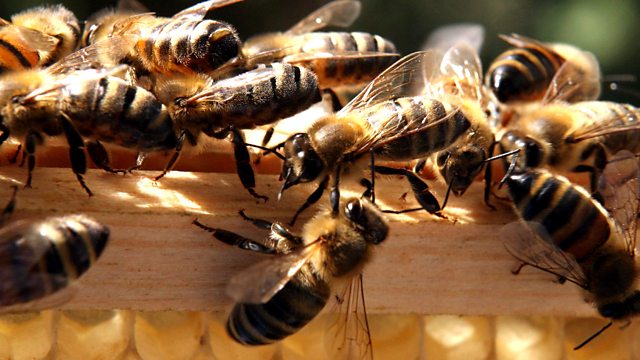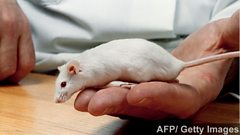Self Assembly
From cells building a human embryo to robots using swarm intelligence to work together, the amazing world of self assembly. With Jamie Davies, Sharon Glotzer and Roderich Gross.
Cells working together to build a human embryo, a swarm of bees, robots joining forces to explore challenging terrain. These are all examples of self assembly – the coming together of simple units to form something of great complexity. To explore this wide-ranging area of research Bridget Kendall is joined by experimental biologist Jamie Davies, chemical engineer and physicist Sharon Glotzer and robotics engineer Roderich Gross.
(Photo: Bees working together: Credit: Matt Cardy/ Getty Images)
Last on
Clip
-
![]()
Growing kidneys in the lab
Duration: 01:01
Chapters
-
Jamie Davies
How a human embryo builds itself
Duration: 11:12
Roderich Gross
Robots and swarm intelligence
Duration: 10:33
60 Second Idea to Change the World
Silencing car horns
Duration: 05:50
Sharon Glotzer
Using molecular self assembly to create new materials
Duration: 11:32
Jamie Davies
![Jamie Davies]()
Jamie Davies is Professor of Experimental�� Anatomy at the University of Edinburgh.�� He unravels the processes by which a fertilised human egg is able to develop into an embryo without any external input.�� He also talks about using cellular self assembly to grow kidneys in the laboratory.
��
Roderich Gross
![Roderich Gross]()
Roderich Gross�� is Senior Lecturer in Robotics and Computational Intelligence at the University of Sheffield.�� He uses small, simple robots – ‘swarmbots’ – to work together without an overall blueprint to carry out a variety of tasks.�� Their behaviour is modelled on the swarm intelligence which can be observed in the natural world – flocks of birds, swarms of bees, shoals of fish etc.
Sharon Glotzer
![Sharon Glotzer]()
Sharon Glotzer is Professor of Chemical Engineering at University of Michigan College of Engineering.�� Her work with nanoparticles and molecules uses self assembly to create new materials with properties such as the ability to change shape or colour.�� She also envisages using the technology to store data not on hard drives, but in clusters of particles suspended in liquid.��
60 Second Idea to Change the World
![60 Second Idea to Change the World]()
Jamie Davies feels that the car horn is a blight on urban living.�� He proposes a way of using the principles of local control and feedback (both central to cellular self assembly) to reward drivers who refrain from honking their horns when waiting at stop lights.�� Jamie proposes that the lights should be fitted with directional microphones which help to dictate the traffic flow, so that a noisy queue of honking�� cars will have to wait longer for a green light than a quiet one.
Broadcasts
- Sat 4 Oct 2014 21:05GMT���˿��� World Service Online
- Sun 5 Oct 2014 09:05GMT���˿��� World Service Online
- Mon 6 Oct 2014 02:05GMT���˿��� World Service Online
Podcast
-
![]()
The Forum
The programme that explains the present by exploring the past







